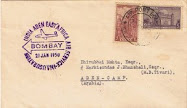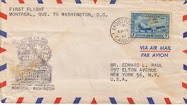


There were many who were experimenting but Orville & Wilbur Wright, cycle engineers, from Dayton, Ohio were more fortunate than others to have flown the first powered airplane. They had been building gliders since 1900 and had made several hundred glides. However, they could not find a suitable automobile engine to power the gliders. After two years of gliding they commissioned their employee Charlie Taylor to construct a light but powerful petrol engine from scratch which they installed in a new winged aircraft which they named the "Flyer". A sprocket chain drive borrowed from bicycle technology, powered the twin propellers, which were also made by hand.
The miracle of sustained flight became a reality on 17th December, 1903 when with Orville Wright at the controls the Flyer took off from a wooden monorail and became airborne for 12 seconds. This was on the sandy expanse of Kitty Hawk, North Carolina. Later that day Wilbur flew 850 feet in 59 seconds.
The 'Flyer' was a frail wooden biplane with linen wings of 40 feet span and exceptionally tall rudders at the rear, linked by cables to the tips of the main wings.
To fly the airplane, the pilot lay prone with his head forward, his left hand operating the elevator control. Lateral control was achieved by warping the wing tips in opposite directions via wires attached to a hip cradle mounted on the lower wing. The pilot shifted his hips from side to side to operate the mechanism, which also moved the rudder.
The Wright Brothers can be seen on the 15c stamp issued by Bophuthswana to commemorate the 75th anniversay of the first powered flight.
Some stamps issued to commemorate the 75th anniversary of powered flight















No comments:
Post a Comment